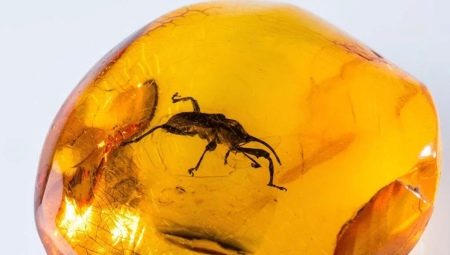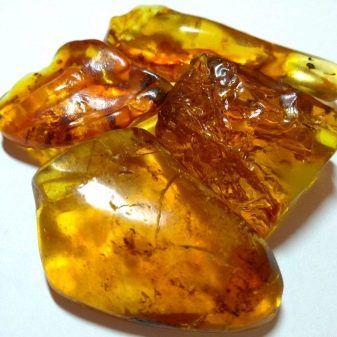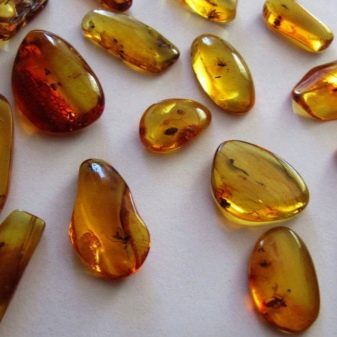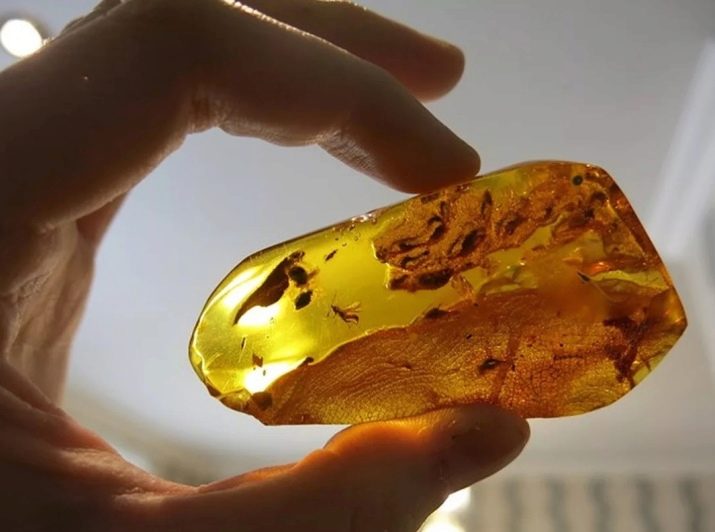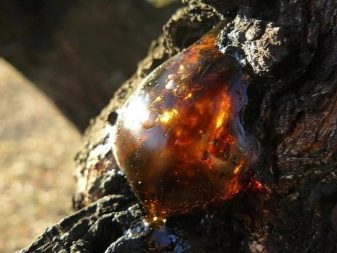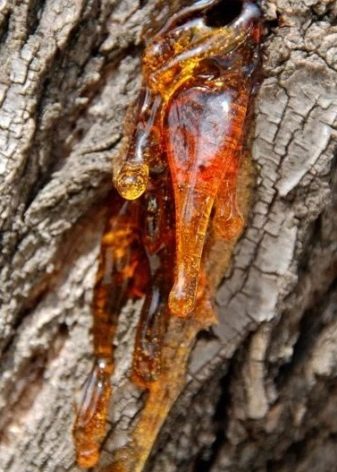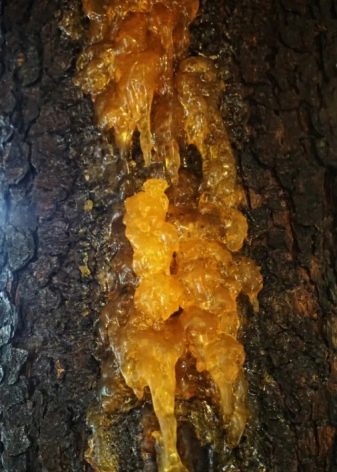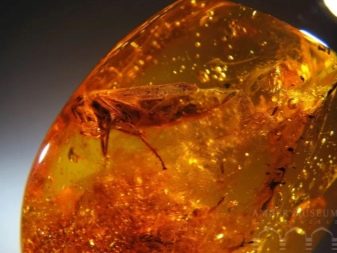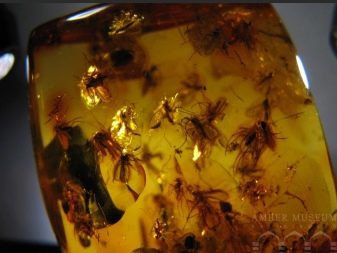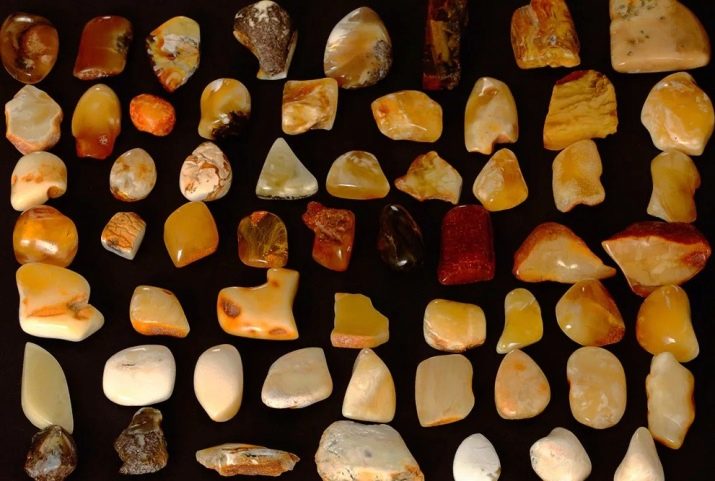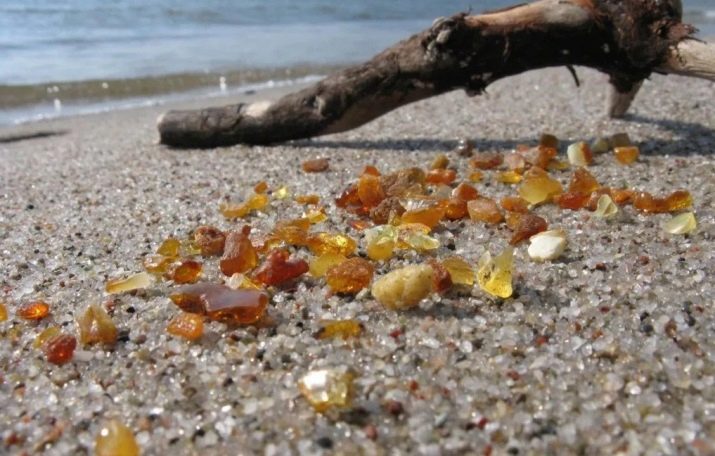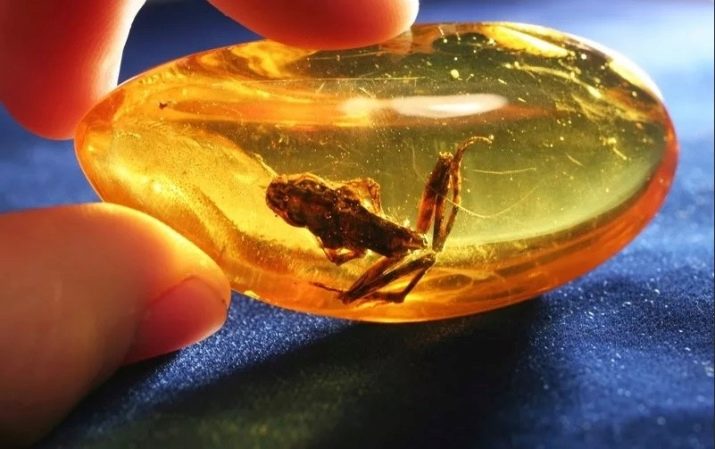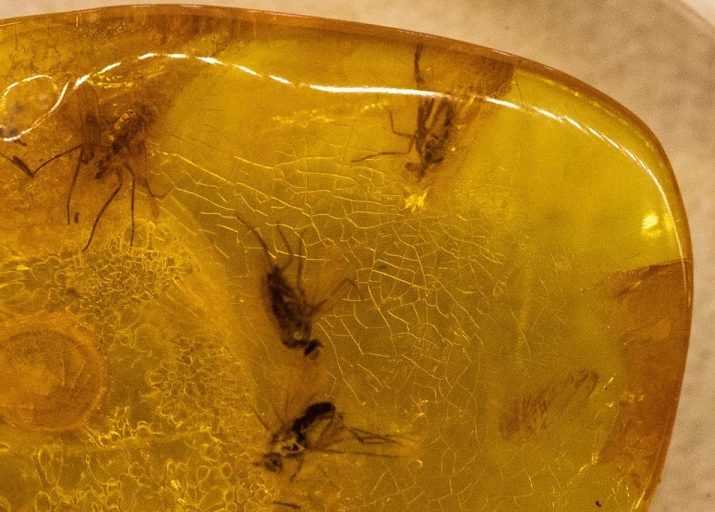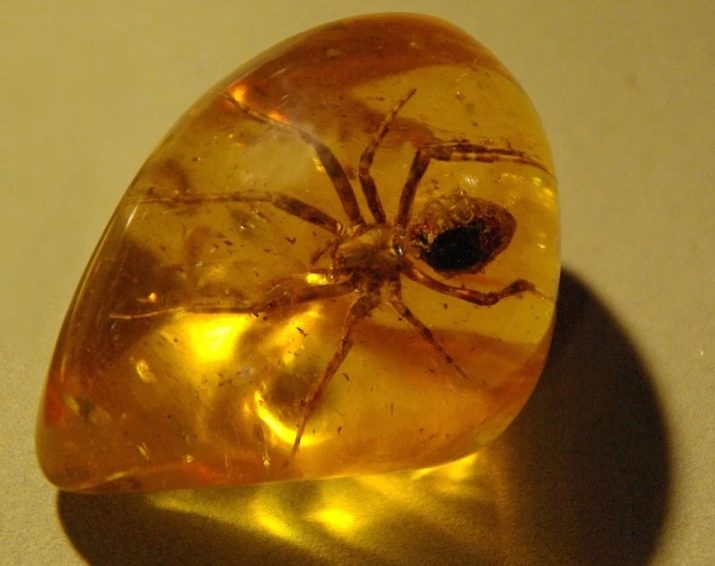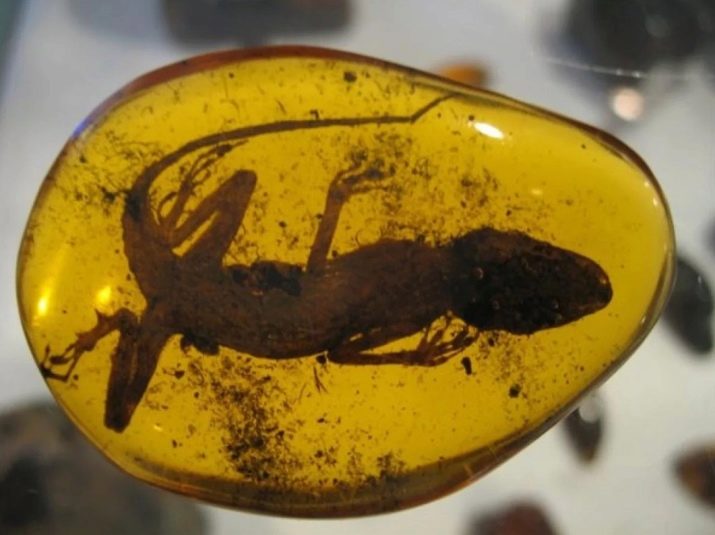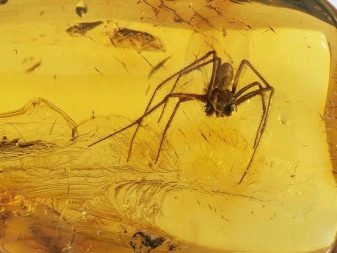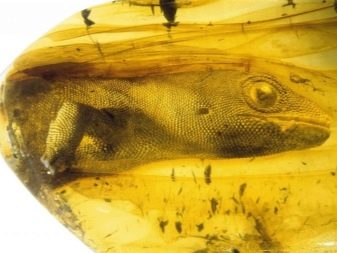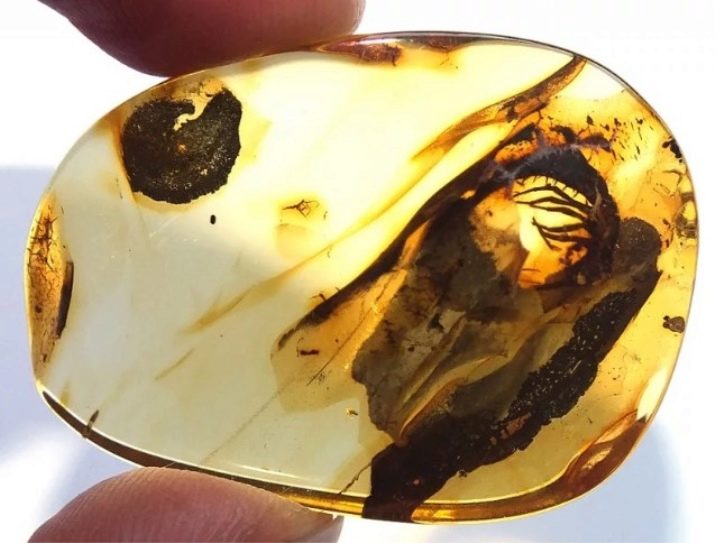Amber is a petrified resin of ancient trees. In the world it is not so rare. For millions of years, the resin, resistant to the effects of external forces, along with the trunks, was often torn down by water flows and overlapped by layers of loose rocks. At the same time, wood, as a rule, collapsed, but very unusual transformations took place with resin — it acquired the properties of a stone. Sometimes layers containing fossilized resin — amber — appear again on the surface, as, for example, occurred on the coast of the Baltic Sea, and then this witness of bygone eras can become accessible to people.
Of particular interest to jewelers and scientists exploring the development of life are stones with inclusions: animals that once fell into the trap, insects, spiders and other small creatures stuck to the flowing resin. They were not able to free themselves, the resin gradually swallowed them up, as if having been canned.
Stone features
Amber is an unusual ornamental stone. If the crystallization of most rocks is a geochemical process that takes place in the depths of the planet, as a rule, at the highest temperatures and enormous pressure, then amber in its formation goes a completely different way. And it begins not in the depths, and even the opposite at all.
A wound received by a tree, for example, from a lightning strike, with a strong wind or from the fall of another tree, is healed with resin flowing from the vessels. Resin tightens the damage, preventing the penetration of parasites, under its layer the integuments are gradually restored and the tree continues to grow. At the same time, a brilliant, almost transparent viscous mass attracts various small forest dwellers, and they, hoping to profit, rush to the damaged tree.
While the tree grows, the resin remains on its trunk in cracks and chips, filling them. It may also be inside the trunk if a young tree has been damaged, gradually such a section will be under layers of growing wood and bark. When a tree inevitably dies, its trunk, having fallen, will begin to decompose, but the resin that has changed its structure may last for millions of years, hiding prehistoric inclusions inside it.
Amber has always been highly valued for its unusual color, resembling the sun. Unlike many other ornamental stones, it seems to radiate heat and light. To the touch this stone is really warm.
Especially always prized pieces of amber with inclusions, once considered the game of nature, a kind of coincidence with the appearance of insects or other small creatures. The price of such unique pieces of amber can reach tens of thousands of dollars. This is probably the only ornamental stone, the price of which increases due to inclusions.
The share of such stones hardly exceeds 10% of the total volume of the total extracted amber.
Samples of amber from various deposits often differ significantly in their physical properties: hue, color, hardness, brittleness. The reason for the differences may be the origin - belonging to different biological species of trees, different ages, chemical composition of host rocks, depth and more.
How are they obtained?
The formation of biological inclusions - the process is far from rare, it is happening in our time. Flowing resin is an attractive substance for many insects. However, after touching it, not everyone is able to free themselves. If the tar continues to flow, a randomly caught creature will gradually be under a layer of this viscous fluid.Such inclusions were called by the Latin term “inclusive” (inclusion). Moisture gradually evaporates from the resin that has spilled onto the surface of the trunk, it becomes hard and often grows into the trunk like a foreign body, completing its task, protecting the injured organism from external harmful effects.
The animals that have already died in it remain, as they should be, in their place, inside the formed accumulation of resin. Having passed its considerable life path, a tree, like any living creature, sooner or later dies, its wood often rot, but hardened resin, not subject to this process, becomes the property of the earth's crust, like a normal stone. It brings loose rocks, it is influenced by streams of water, it is thrown together with pebbles by the surf. Thus, a stone of varying degrees of rounding is formed - amber.
Kinds
Amber keeps within itself everything that has somehow got into it for hundreds of millions of years. Modern researchers use pieces of amber to restore the air composition of past eras because, apart from biological inclusions, amber often contains air bubbles. To notice them in the treated amber is not at all difficult.
However, animals that have been mothballed are of more interest to ordinary people, as well as specialists.
Most often in the inclusions are found, of course, insects. Since its appearance on Earth about 150 million years ago, this group of invertebrates has firmly taken the lead in the number of species and variety of forms. In this way, insects in amber is a natural, one might even say, inevitable phenomenon caused by the long-term coexistence of insects and plants. The variety of insects in ancient times was confirmed by the frequency of their presence inside pieces of amber - fossil resin.
However, the inclusions in amber are not limited only to representatives of this always numerous group. Other animals, spiders, scorpions, wood lice, became victims of the resin less often. Predators certainly sought to try their luck near a drop of resin that was attractive to insects - as a result, they themselves were caught along with their victims. Woodlice most likely became prisoners of amber due to their slowness. If the resin flowed quickly, then they just got in its way.
Another thing - the rare finds of more complex creatures. Thus, in one of the pieces of amber, a small lizard was recognized, which lived in the forest about 55 million years ago. How did she fall prey to tar? Most likely, she also hunted and approached her in an attempt to wait for the insects that curled around. Further development of the plot is not difficult.
The lizard could use the favorite method of most of its modern relatives - a sharp throw on an unsuspecting victim. Whether her hunt was successful, it doesn't matter now. The result was a unique amber with a small ancient lizard inside.
The most famous inclusions
The study of the contents of amber began in the XVIII century. They began to study it under a microscope and found out that inside there are really inclusions - the inclusion of foreign bodies, and not at all a game of nature, as previously thought. The study of inclusions has become even one of the areas of paleontology - the science exploring the remains of the ancient inhabitants of the Earth.
Nowadays, thanks to amber, thousands of species of extinct creatures are described, which otherwise would never have become the property of science. The similarity of the ancient inhabitants with their modern kin is striking. Already in the Mesozoic all modern insect groups lived on Earth, spiders did not differ from the modern ones either. Yes, and scorpions were exactly the same.
Pollen and parts of plants conserved in resin also indicate the existence on the Earth of many of their modern representatives for at least one hundred million years.
Much less often there are truly unique finds, allowing more fully restore the course of evolution of individual groups of organisms.Of course, far from all of them and not immediately get into scientific laboratories, since it is the uniqueness of individual stones with inclusions that makes them most valuable not only for science, but also at organized auctions.
In Baltic amber most often there are inclusions containing flying insects, such as a mosquito, mokrets, fly, different types of beetles. This leads to a conclusion about the past of the region. Most likely, evergreen forests with numerous fresh water bodies once grew here. This confirms the presence of various ants - and in our time typical forest insects.
However, sometimes real unique persons are found in amber. In Burma, a piece of amber was found with the remains of a long and thin tail covered with feathers. A comprehensive study of the sample confirmed the assumption that this is the dinosaur tail of the Cretaceous period.
No less striking was the discovery of unusual arthropods, taken first for some scorpions. After a detailed study, a group of arachnids was named tailed spiders. The purpose of the articular outgrowth of the abdomen of these creatures is not yet completely clear.
And the finding inside amber - the creatures of ancient trees - a small fish or mollusk shells, is quite inexplicable.
Similar unusual inclusions were found in the Carpathians. Explain this fact so far failed.
Yantar helped to learn a lot about the ancient eras of our planet, however, while he himself was still trying to solve an unsolved riddle. In pieces of this unusual rock for the time it was studied, anything was found - from microorganisms and microscopic pollen to feathers of birds and scales of reptiles, however, there are still no needles or even needles of needles of those mysterious trees that has become amber in millions of years.
How animals get into amber, see below.
